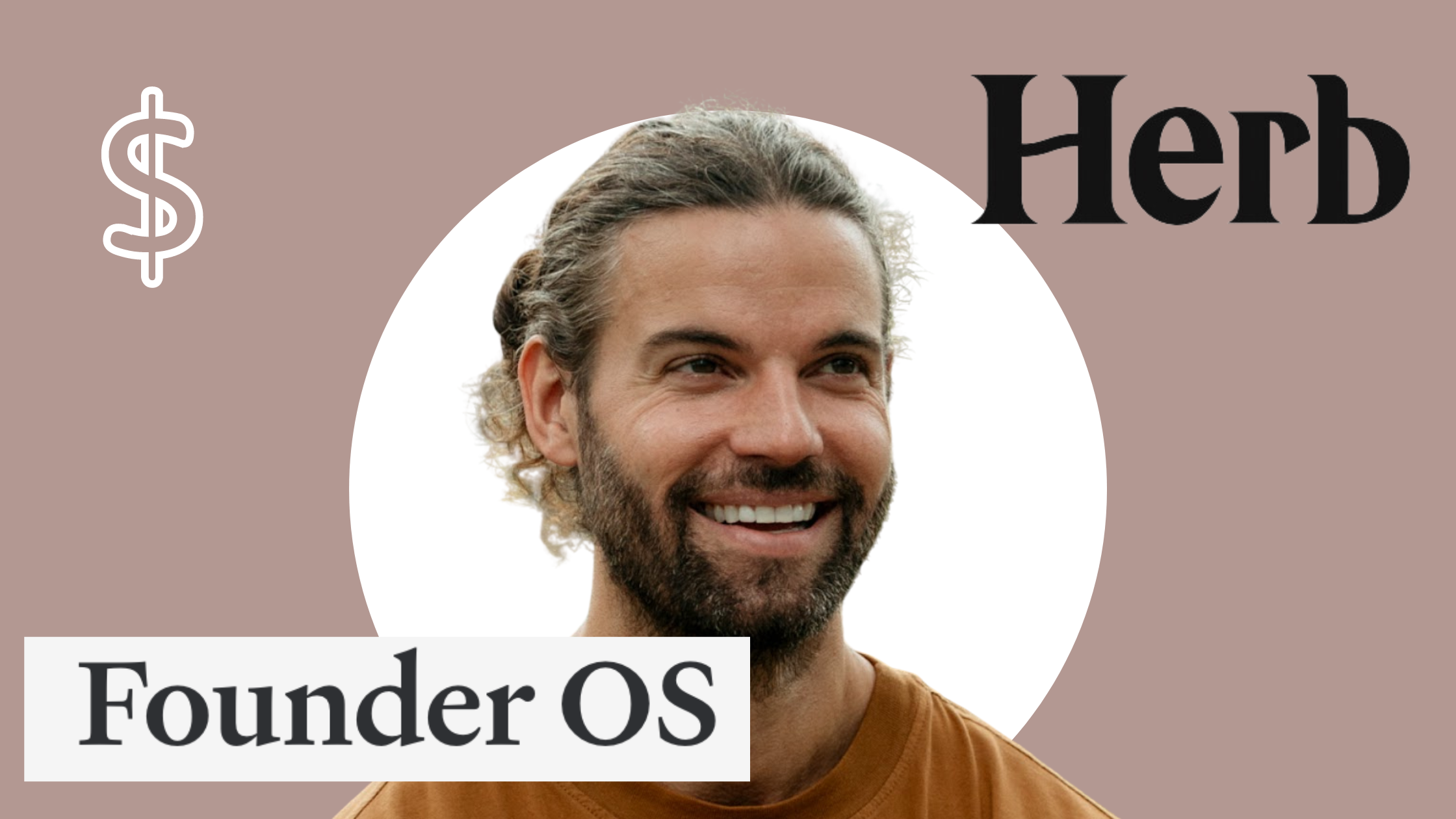Many people face the challenge of finding time to explore new business ideas while seeking to increase their income.
On the other hand, we have someone like Matt Gray who makes $730,000.00 PER MONTH while just working 4 hours per day.
So, how exactly does he do it? How does 4 hours per day equate to that amount of money? In this article, we’re going to break down exactly how he makes this happen.
Before we get started, if you don’t want to miss awesome case studies like this one (always free), sign up to our newsletter called “creator hustles” below. We’ll be uploading every single case study there once published.
Now, let’s dive into exactly how Matt Gray is closing in on $9,000,000 per year, only working 4 hours per day.
How It Started For Matt Gray
Matt started his entrepreneurial journey at 22, running a coding boot camp in Canada. He did pretty well with these boot camps. However, his time was spent working all day, which led to no control over his time and life.
He knew this wasn’t sustainable, so he sought a change in his approach. Matt realized that to achieve both financial success and personal well-being, he needed to radically alter his work habits and business strategies. This realization marked the beginning of his transition from a high-stress, time-consuming work environment to a more balanced and efficient approach.
This ultimately led to his efforts being geared toward efficiency, leading to the four pillars of leverage.
Matts Four Pillars Of Leverage
So, what are the four pillars of leverage? They are:
- Deep Work
- Automation
- The Founder Flywheel
- Chief Of Staff
Let’s go over each one and their importance.
Pillar One: Deep Work
Matt believes 1 hour of deep work is better than 8 hours of shallow work. As someone who has practiced deep work, I agree 100%.
He curates what needs to get done the night before so when he wakes up, he can get back to work right away. As soon as he gets up, he performs deep work from 6 a.m. to 10 a.m. with absolutely zero distractions.
So why does he ensure he does his deep work first thing in the morning? Well, it’s because scientifically our ability to get deep work done is at it’s peak when we first wake up.
Within his deep work, he focuses on three things. Writing, systems, and automation.
He explains that writing is a superpower. Why? Because it’s literally involved in everything you need to do as a business owner. Whether it’s blog posts, emails, or ad copy, writing is always involved. Here’s what he focuses on when he writes.
- Tips
- Lessons
- Systems
- Playbooks
- Personal Stories
- Benefits
- Examples
He states that when you write for your niche, focusing on these seven things will have you constantly equipped with content ideas.
Not only does writing help with all those about things, it also helps with systems.
How Matt Optimizes His Deep Work
- He keeps his phone in another room.
- He puts his noise-cancelling headphones on and plays his deep work playlist on Brain.fm, which is music that is designed to increase your flow state.
- He drinks an iced Americano for a boost of energy.
Key Takeaway: Deep work is essential because it allows you to curate all the content you need to automate & delegate. Not only that, but it’s also essential to get better every day because it allows you to be submerged in your realm of expertise.
If you’re wondering what Matt does deep work for. Here’s his content schedule for this year from his Twitter account.
I am focused on growing my audience to 10,000,000 in 2024. My mission is to help 1,000 founders make $1,000,000 online in 2024. I will launch:
- 1 podcast per week
- 2 newsletters a week
- 14 short form videos per week
- 2 long form YouTube videos per month
Pillar Two: The Founder Flywheel
The Founder Flywheel is a concept Matt leverages to multiply his efforts. According to Nathan Barry, founder of Convert Kit and a friend of Matt’s, the flywheel works on the principle that activities in the flywheel lead from one onto the next. Each rotation of the flywheel gets easier than the previous, and each rotation produces more than the last. The overall goal of the Founder Flywheel is to create compounding content, leverage it for niche domination, and establish a system that automates this process for sustained growth and efficiency.
The Importance of Creating a Personal Brand for the Founder Flywheel
Matt stresses the importance of creating a strong personal brand around his businesses. He points out that Elon Musk has a bigger personal brand than Tesla, indicating that individuals often resonate more with people than with corporations. This personal connection is a crucial aspect of modern business strategy.
Steps to Putting Together a Founder Flywheel
To build a successful Founder Flywheel, Matt recommends:
- Creating profiles across all major social platforms with consistent branding. Developing a content strategy is essential, which involves choosing four main content categories and creating a content schedule to go along with it.
- He focuses on engaging with the audience as it grows.
- Analyizing what works and adjusting over time.
That brings us to the next pillar: Automation, Elimination, and Delegation.
Pillar Three: Automate, Eliminate, Delegate
The founder flywheel could get hectic, so the next step is to automate, eliminate, or delegate.
This pillar focuses on efficiently managing the time and resources involved in business operations. Matt follows the principle of never automating something that can be eliminated and never delegating something that can be automated. He learned this valuable lesson from Tim Ferris’s book, ‘The 4-Hour Work Week.’
The steps for AED, according to Matt, are:
- Monitor what you’ve been doing the last 8 weeks.
- Indicate which tasks give you energy or drain your energy.
- Mark whether you could automate, eliminate, or delegate.
- Any task you could eliminate you should stop doing immediately.
- Any tasks that could be delegated- create a loom video and send it to the right person on your team (or hire a VA).
- Lastly, any tool you could automate, you should find the best tool to do it for you.
Examples Of Automation, Elimination, and Delegation
| Task Category | Examples of Tasks |
|---|---|
| Automation | – Social Media Posting using Buffer or Hootsuite |
| – Email Marketing with Mailchimp or ConvertKit | |
| – Data Entry using Excel macros or Google Sheets scripts | |
| – Customer Support with chatbots and AI-driven tools | |
| – Content Distribution via Buffer or IFTTT | |
| – Inventory Management with automated stock tracking | |
| – Appointment Scheduling using Calendly or Acuity | |
| Elimination | – Low-Value Tasks with minimal impact on goals |
| – Unproductive Meetings lacking actionable outcomes | |
| – Non-Essential Reports rarely used or outdated | |
| – Unused Software Subscriptions consuming resources | |
| – Excessive Email Subscriptions providing little value | |
| – Redundant Administrative Steps hindering efficiency | |
| – Complex Approval Processes with unnecessary layers | |
| Delegation | – Email Management to categorize and respond |
| – Content Creation, writing, editing, and publishing | |
| – Data Analysis, collection, analysis, and reporting | |
| – Customer Support, handling inquiries and issues | |
| – Administrative Tasks such as scheduling and expenses | |
| – Sales Calls and negotiations with clients | |
| – Project Management to oversee tasks and teams |
Pillar Four: Hiring a Chief of Staff
The final pillar mentioned by Matt in the Founder Flywheel strategy is hiring a Chief of Staff. This role is crucial for entrepreneurs and business leaders whose time is increasingly consumed by the complexities of scaling their businesses. A Chief of Staff acts as an operational and strategic right hand, streamlining daily tasks, managing communications, and handling logistical aspects that significantly drain a founder’s time and focus.
With a Chief of Staff, a founder can focus on the most impactful areas of the business, such as setting the vision, making strategic decisions, and driving innovation.
What are your biggest takeaways from Matt’s methods of making $730,000 per month?”

